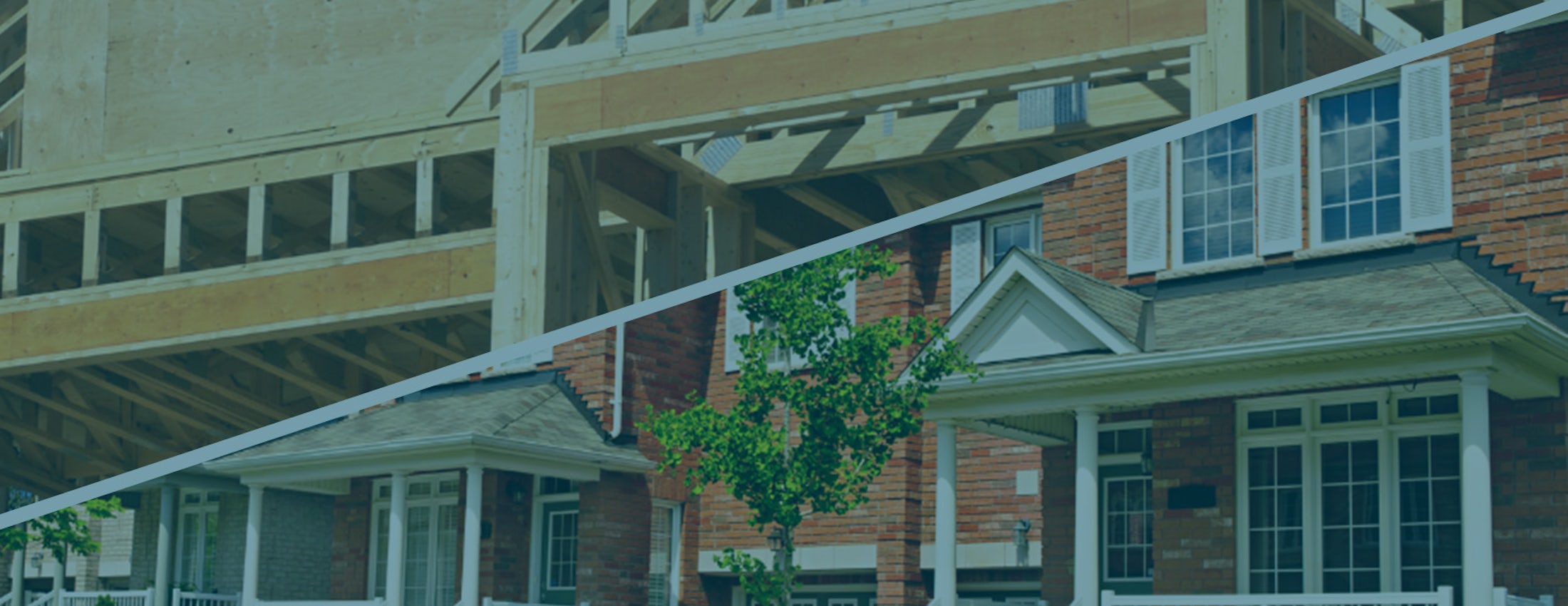- By
- Kindred Homes
- Posted:
- March, 26, 2024
- Categories:
- About Our Communities
Deciding whether to go for a new build or an existing home is a big step in the journey of buying a house. Each option offers its own set of experiences that can shape your living situation and investment potential. In this guide, we'll break down the differences between new builds and existing homes, giving you the confidence to navigate the real estate market.
Define:
Let's start by defining our terms.
New Builds:
These are freshly constructed properties or those currently under construction, boasting modern amenities and often sold by home builders or developers. Throughout this article, we'll refer to new builds as recently completed homes.
Existing Homes:
These range from historic homes to more contemporary structures with previous occupants. They come with their own stories and quirks, having been owned and typically lived in by someone else before you took ownership.
New Builds:
New builds come with a range of unique features and benefits. Here are a few:

1. Stylistically Close to Current Trends:
Featuring sleek designs and contemporary features, new builds appeal to those who love modern aesthetics. They reflect the latest architectural trends and offer a fresh look.

2. Under Warranty:
Enjoy the peace of mind that comes with a builder's warranty, protecting you from potential structural issues or defects during the initial years of ownership. Kindred Homes offers a comprehensive home warranty program for added assurance.

3. Unmatched Incentives & Discounts:
Developers often offer attractive incentives and discounts to buyers, such as complimentary upgrades or assistance with financing. For example, Kindred Homes provides various programs like the $10K Closing Costs Flex or a competitive 4.99% interest rate through its partner, Kindred Home Loans. Terms and Conditions apply.
Existing Homes:
Here are some key considerations if you're considering purchasing an existing home:

Potential Maintenance Issues:
Older homes may require more maintenance and repairs, particularly if upkeep was neglected by previous owners. Common issues include foundation problems, plumbing issues, and roofing concerns. However, these are less likely with new builds, which are typically under warranty.

Slower Value Appreciation:
Existing homes generally appreciate more slowly than new builds, partly due to the maintenance needs they may have. As homes age, more work is required, impacting their value growth compared to newer properties.

Outdated Designs and Features:
Existing homes often come with older design elements and features, as updating them can be costly. New builds account for this in their initial pricing, saving you from the hassle of redesigning or renovating soon after purchase.
How to Find:
New Builds:
Start your search by exploring various developments in your desired area. Look through real estate listings, check out websites of home builders, and visit model homes to get a feel for what's available.
Fortunately, we've put together a comprehensive guide for exactly how you can find new build homes, whether you're looking online or elsewhere. Click here to read more.
Existing Homes:
Tap into the expertise of experienced real estate agents or investors to navigate existing home listings. They can provide valuable insights, arrange viewings, and help you negotiate offers confidently.
How to Finance:
New Builds:
Financing a new build often requires a tailored approach, such as securing a construction loan or a mortgage specifically designed for new constructions. Work with a mortgage lender who understands new builds to explore financing options that align with your financial goals.
Existing Homes:
Traditional financing options like conventional mortgages or FHA loans are common for purchasing existing homes. Partner with a reputable mortgage lender to explore various loan options and secure favorable terms based on your needs.
In conclusion, the decision between a new build and an existing home depends on your preferences, priorities, and budget. By weighing the pros and cons of each option and seeking guidance from professionals, you'll be well-equipped to make a choice that suits your lifestyle and goals.

